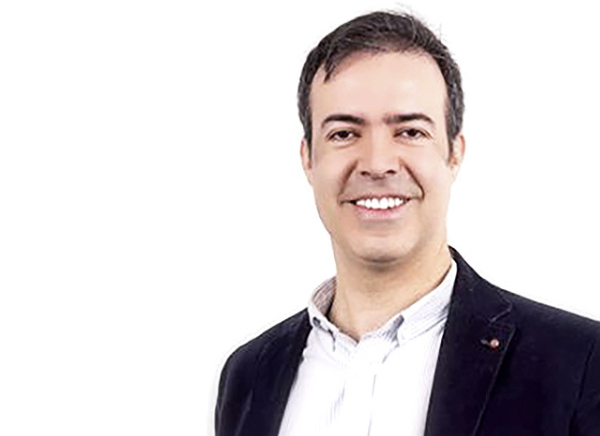

In a recent interview with Rodrigo Fernandes, the Director of ES(D)G (Empowering Sustainable Development Goals) at Bentley Systems, Rabab Zehra, Executive Editor – TECHx delved into the transformative concept of the “double transition” and its profound implications for the integration of digital technology and sustainable, low-carbon pathways. As the urgency to achieve sustainable development goals grows, Rodrigo sheds light on the specific challenges faced by infrastructure professionals and the role of digital workflows, data, and insights in catalyzing fundamental change within the sector.
TECHx: Rodrigo, can you elaborate on the concept of the “double transition” and how it relates to the integration of digital and low-carbon resilient pathways?
Rodrigo: We are currently amidst a transition towards a low-carbon, climate-resilient, circular economy. This transition involves a convergence of various stakeholders, including communities, businesses, investors, and governments, towards adopting sustainability principles such as circularity, sufficiency, efficiency, and effectiveness. This evolution necessitates greater transparency and disclosure across supply chains, which can only be achieved in a more interconnected world.
The “double transition” refers to the simultaneous progress of digital transformation and the green transition, intertwining previously disparate realms. This convergence is powered by technologies like artificial intelligence (AI), the Internet of Things (IoT), the metaverse, modeling, and digital twins, which serve as integrators. Going digital enables the widespread use of digital technologies to enhance environmental performance in areas such as water management, air quality, energy efficiency, carbon reduction, waste management, and materials usage. The digital transition and Sustainable Development Goals (SDGs) are intertwined, with digital twins serving as enablers and accelerators for tangible real-world change.
TECHx: Given the urgency of achieving sustainable development goals and future-proofing infrastructure, what specific challenges do infrastructure professionals face in implementing the double transition? Are there notable barriers or obstacles that need to be overcome?
Rodrigo: Infrastructure professionals confront several formidable challenges in this era:
– Urgency: The need for low-emission, climate-resilient infrastructure demands an unprecedented scale and pace of decarbonization, with three-quarters of the infrastructure required by 2050 yet to be built.
– Talent Shortage: There is a shortage of engineers and sustainability experts globally, compounded by inadequate funding for infrastructure despite considerable investments.
– Diversity: Complex projects involve numerous disciplines, teams, tools, and data formats, leading to data silos.
– Complex Supply Chain: Infrastructure projects are exposed to resource scarcity upstream and involve multiple downstream stakeholders requiring more transparency.
– Longevity: Infrastructure assets have lifespans of 60 to 80 years, necessitating data control and vendor-agnostic solutions.
– Dark Data: Around 80% of IoT and sensor data goes unused.
– Increased Societal Awareness: This knowledge influences consumption patterns, compliance, and regulatory frameworks.
Digital twins offer a solution to these challenges by integrating and aligning data with engineering precision. They illuminate dark data, break down data silos, provide contextual insights, and empower better-informed decision-making, ultimately transforming infrastructure performance.
TECHx: How can embracing digital workflows bring about fundamental change within the infrastructure sector? Can you provide specific examples?
Rodrigo: Embracing digital workflows can revolutionize the infrastructure sector in several ways. Infrastructure decisions made today will shape the future for decades or even centuries, making the alignment of digital and sustainability strategies crucial. Digital transformation is already underway, with businesses and organizations leading the charge. Here are some examples:
Empowering Clean Energy Transition: Botswana International University of Science & Technology is exploring geothermal energy sources using data integration and analysis. Silo AI’s digital twin for Helsinki’s district heating system optimizes energy efficiency.
Sustainable Mobility and Decarbonization: AFRY designs an eco-friendly test track for electric and autonomous trucks using 3D modeling. Mott MacDonald reduces waste and carbon emissions for High Speed 2 Phase 1 project using digital data management.
Food and Water Security: PGESCO’s agricultural drainage water treatment plant enhances agriculture in the Western Desert region. Ruden AS locates freshwater aquifers using geological data, serving 2 million people in Tanzania.
Adapting to Climate Change: Yuba Water Agency’s New Bullards Bar Dam digital twin improves dam safety, reducing the risk of failure and downstream damage.
TECHx: What role does data and insights play in enabling infrastructure professionals to make better decisions about the design, construction, and operation of infrastructure? Specifically, how can technologies like digital twins and AI be utilized for infrastructure development and what benefits do they offer in terms of sustainability?
Rodrigo: Data and insights are pivotal for infrastructure professionals to enhance decision-making throughout the infrastructure lifecycle. Digital twins, AI, and data-driven approaches provide several advantages:
– Connectivity: Digital twins combine engineering, operational, and resource data, enabling precise decision-making.
– Barriers Elimination: They address challenges like data silos, talent shortage, and resource scarcity.
– Waste Reduction: Digital twins reduce waste and carbon emissions during construction and operation.
– Productivity Enhancement: AI automates mundane tasks, allowing engineers to focus on value-adding activities.
– Operational Efficiency: AI supports operational decisions, such as detecting pipe leakages and optimizing energy consumption.
By leveraging these technologies, infrastructure professionals can achieve more sustainable, resilient, and predictable outcomes while addressing pressing global challenges.
TECHx: How is Bentley Systems contributing to sustainable efficiency that aligns with the COP 28 theme and focus?
Rodrigo: At Bentley Systems, we recognize the significant carbon footprint associated with infrastructure and the urgency of adapting to global challenges. Our digital solutions empower infrastructure professionals to create more sustainable, resilient, and predictable outcomes. We are committed to supporting the achievement of UN SDGs through infrastructure digital twin solutions and consider this a strategic priority for the next decade. We aim to help future-proof infrastructure and enable users to do more with less, ultimately contributing to a more sustainable world.
